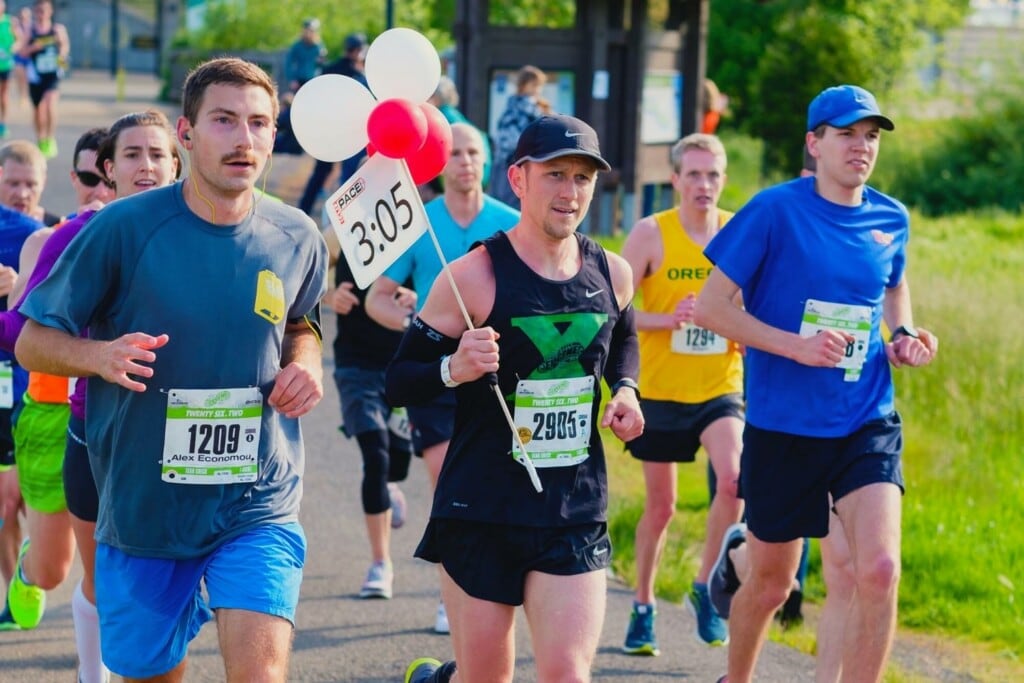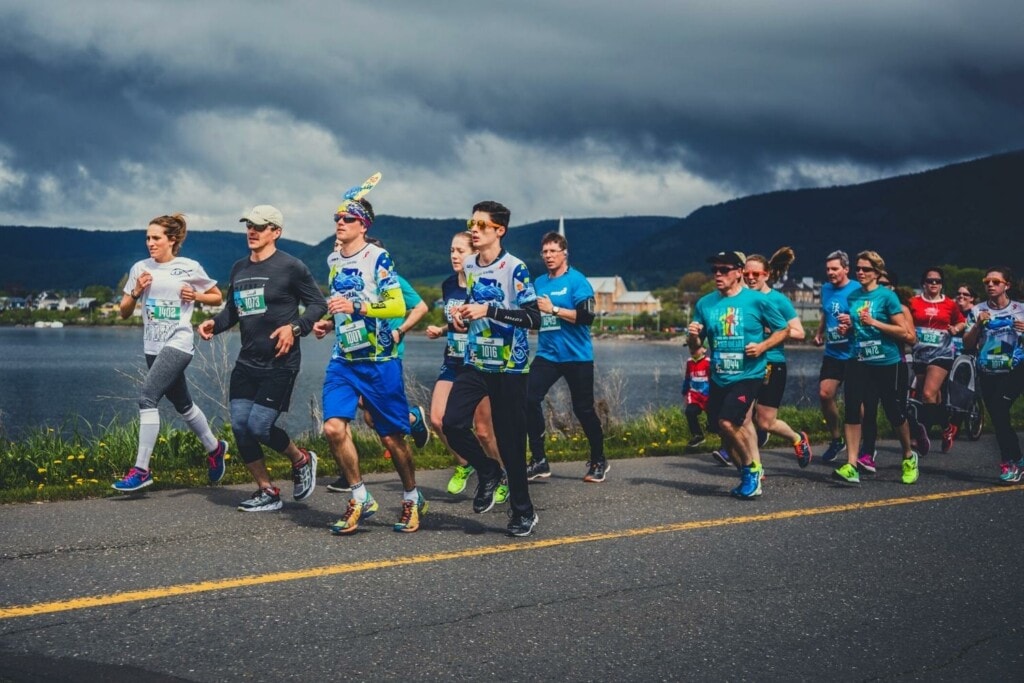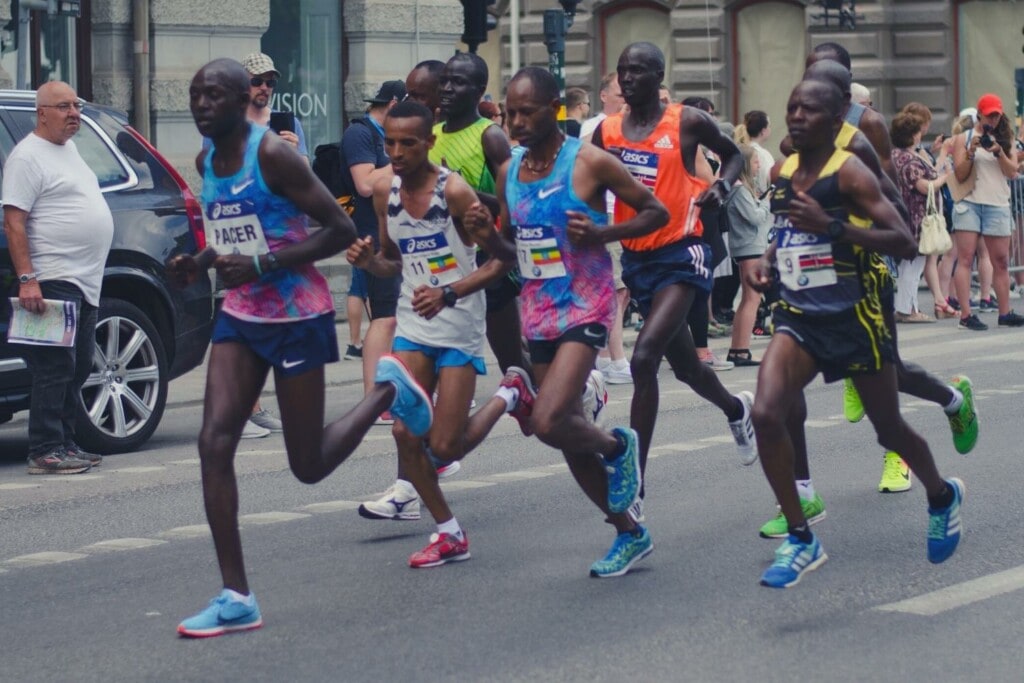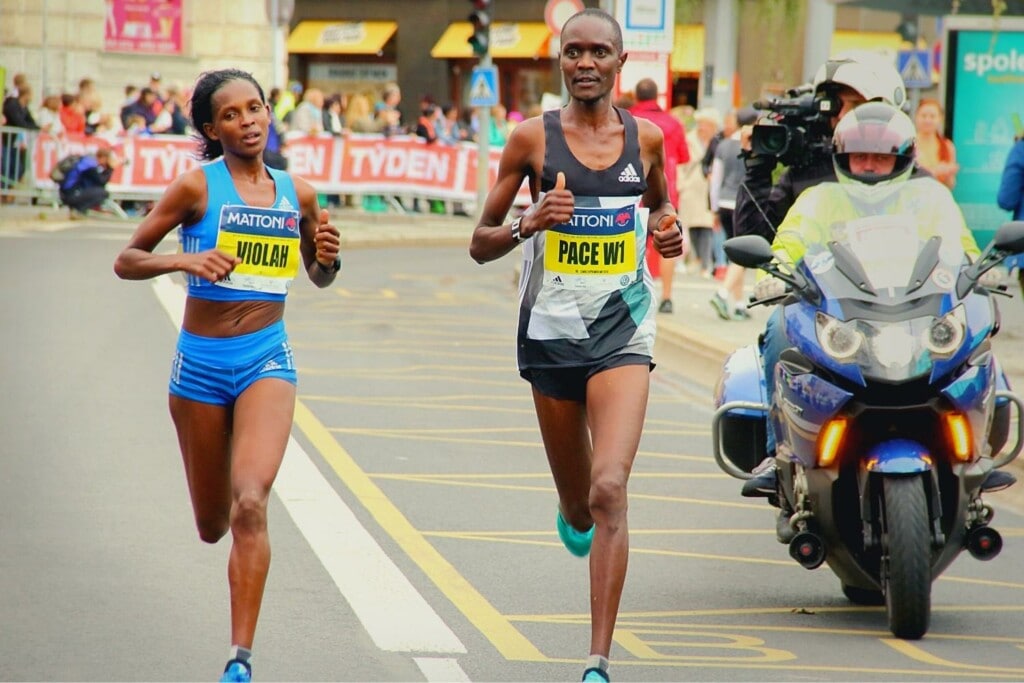Published on: 10/27/2022
Running a race with a pacer can be a great way to beat your personal best time. It also helps inject some fun, enjoy someone’s company, and get involved in the local social and running life. But what advantages are there to running with a pacer, and when should you choose to do so?
Pacer running is most common in the United States of America. However, it’s not necessarily a common practice for all events. For longer races like marathons and ultramarathons, pacers can help you keep on track to achieve a time. They also relieve some decision-making pressure and give you a boost when you’re feeling low.
Read on to find out how pacers work, why and where you can use one, and how to get one for your next race.
What Is a Pacer for Running?
From beginner runners who aren’t comfortable setting and following even splits during a race to an experienced runner looking to break a personal record, pacers can benefit anyone looking to hit a desired time for a race. In road racing, pacers are often part of the race organization, especially at big city marathons. You may need to find a pacer among other runners or volunteers for smaller events.

Pacers do “what it says on the tin” – they run at a specific pace or average split for the whole race or a part of it. They are usually excellent runners who can maintain an even pace and control their effort. Other participants typically follow them in a group and may sometimes drop behind to a different set time or could speed up to join a faster group.
For long-distance events on trails, typically ultra marathon races, there’s an option to join and drop pacers throughout the route. Depending on the race, pacers can sometimes help carry some of your kit. They might even do some navigation during trail runs, which can let your mind relax, especially at night time. However, a typical road marathon pacer’s job is only to run at a set speed.
How do pacers work?
Many elite athletes use pacers to focus on setting a time or breaking a course or world record in a race. Those runners are recruited ahead of time and can be elites themselves. It then depends on the elite runner how long they wish to be paced for. For example, at the 2022 Berlin Marathon, Eliud Kipchoge used pacers when he beat his world record (1). They followed him during the race’s first half and left after the 25-kilometer mark.

For amateur runners, major races have professional pacers available, with a split time highlighted on a sign where you can group around them. All you need to do is follow them at the same speed for the duration of the course.
Ultra marathons and smaller road races don’t organize pacers. However, they may allow participants to sort one ahead of time. This is usually an experienced runner who either knows the course very well or who you know can race faster than you.
How to get a pacer
Finding a pacer doesn’t need to be difficult. At a long-distance event like an organized city marathon, you’ll find pacers already waiting for you at the start line. All you need to do is join the other runners lining up to hit the same splits, and you’ll have nothing else to worry about – just head out for your run and follow your group!
Other options for finding a pacer include:
- Ask a friend or other runner you look up to – from your running club, for example! They’ll just need to know what you expect from the race and what result you’re hoping for, and it can be good fun to run together;
- Run with your coach – if you already have a running coach and they’re not far from where you’re racing, they’ll probably be in the best position to help you reach your goal and provide the right type of encouragement along the way;
- Ask the locals – many events have a Facebook group or other social media channels where you can speak to runners who are either doing the race or willing to help. The running community is usually very open to jumping in like this, so you might find several pacers if you put out a call;
- Check professional services – there are companies that provide pacing, such as Beast Pacing (2). Contact them before your race to see if they’ll be present or what you need to do to get a pacer.
5 Reasons to Use a Pacer
Pacer running is great for motivation, support, and taking one worry off your mind as you focus on hitting even splits and enjoying your best race. Here are some of the top reasons to use a pacer in a long-distance event.
1. Looking to achieve a finish line goal
The number one reason for running with pacers is to hit a certain time for your race or distance. Runners who use pacers often hit PBs because they are no longer focusing on checking their time, worrying about their speed, or wondering what they should do to improve. Typically, running with a pacer allows you to focus on just the running. It ensures you don’t slow down without being aware of it due to fatigue or simply lack of concentration. And it reassures you, as you know, that as long as you’re behind the sign displaying your goal, you will get there in that time.

2. Beginner runners unsure of their ability to run to a set pace
When you run your first marathon or ultra race, the times you’ve hit in training and the feelings you’ve become accustomed to might be difficult to replicate in the heat of the moment. Rather than constantly checking your watch and being concerned about running each mile at a set speed, running behind a pacer is reassuring and gives you the benefit of an experienced runner doing the “thinking” for you.
Additionally, a less experienced athlete simply doesn’t find it as easy to get into a flow and execute a race plan perfectly without emotions getting the better of them. That’s where the pacer benefits really shine.
3. Avoid going too fast
Whether less experienced or simply very enthusiastic, many runners start long-distance events too fast. This leads to burnout and energy loss in the race’s second half and famous examples of “hitting the wall” during a marathon. Most of the time, these happen because of bad pacing strategies (or lack thereof).
Using a pacer forces the runner to stick to an even speed, saving more energy for later in the race and avoiding over-exerting themselves or possibly getting injured.

4. Lift your spirits
No matter the level of mental toughness a runner starts off with, there will always be dark patches during a long race. Even the most accomplished ultra runners, like record-breaking Kilian Jornet (3) or Courtney Dauwalter (4), benefit from using a pacer when they’re facing hard conditions and night-time running with a good dose of added fatigue. In fact, many races, like the Hardrock Hundred Endurance Run (5), assume runners will have pacers with them and have set rules and regulations around this.
A good pacer will help you mentally by encouraging you throughout the run. They’ll also be more lucid and logical, able to update you correctly on distance and pace when you could be getting confused and tired (especially during ultras). Finally, a pacer is ultimately a kindred spirit who can make you laugh and cheer up during dark times!

5. Local involvement
Using a local pacer is usually a great way to find out more about where you’re running, the history of the places you’re going through, and more. For longer events, splitting the distance and picking up two pacers or more gets you meeting more people from the running community – which is an excellent way to make more like-minded friends!
When Not to Use a Running Pacer
Are there times when pacer running could be detrimental to your result or enjoyment of the event? It all depends on your mindset and fitness levels.
Sometimes, you may start with a pacer group beyond your abilities. If you find that you cannot keep up with their pace, it’s best to drop behind and adjust your speed. You could find a different pack to run with or simply run at your own best pace to actually make the most of the day.
Pacers can cause some anxiety in runners who think that agreeing to be paced puts pressure on them to perform to a certain level. Ultimately, being honest with your pacer in advance – if running with someone you know or have arranged to get paced by – is all you need to do to ensure this doesn’t happen. Avoid stress from following a group that goes too fast in bigger events by being honest with yourself – listen to your body and slow down if you have to.
Get Paced to Your Next PB
Pacers can offer huge benefits for hitting a race PB or performing better than you’d have ever done on your own at long-distance challenges. However, you should only use a pacer when you feel that this would be good for your running and when it will still leave you free to run at your own speed, should you choose to do so. Either way, running should create a joyful opportunity, so don’t let the pacer overwhelm you – use them to improve your tempo, and drop them if that’s causing stress!
References
https://www.nytimes.com/2022/09/25/sports/eliud-kipchoge-marathon-record.html
https://beastpacing.com/events-we-are-pacing
https://www.instagram.com/kilianjornet/

